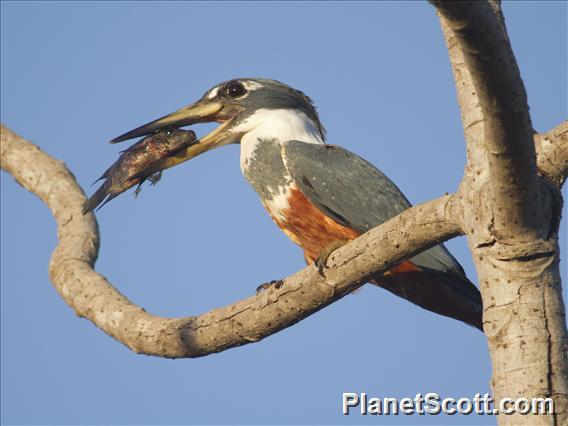Ringed Kingfisher (Megaceryle torquata)

Ringed Kingfisher (Megaceryle torquata)
×


Ringed Kingfisher (Megaceryle torquata)
About Ringed Kingfisher (Megaceryle torquata)
- Kingdom: Animals
- Phylum: Chordates
- Class: Birds
- Order: Kingfishers, Bee-eaters, Motmots
- Family: Kingfishers
The ringed kingfisher is a large, conspicuous, and noisy kingfisher bird commonly found along the lower Rio Grande Valley in southeasternmost Texas in the United States through Central America to Tierra del Fuego in South America.
Source: Wikipedia
Trips
Visits
-
2006-11-11
Sani Lodge, Ecuador -
2007-10-11
La Mancha, Mexico -
2009-01-18
Lamanai Ruins River Trip, Belize -
2009-02-12
Corn Islands, Nicaragua -
2009-02-24
Puerto Jiminez, Costa Rica -
2009-03-13
Rio Paca Station, Panama -
2011-07-15
Pantanal, Brazil -
2011-07-21
Itacare, Brazil -
-
-
-
-
-
-
-
-
-
-




